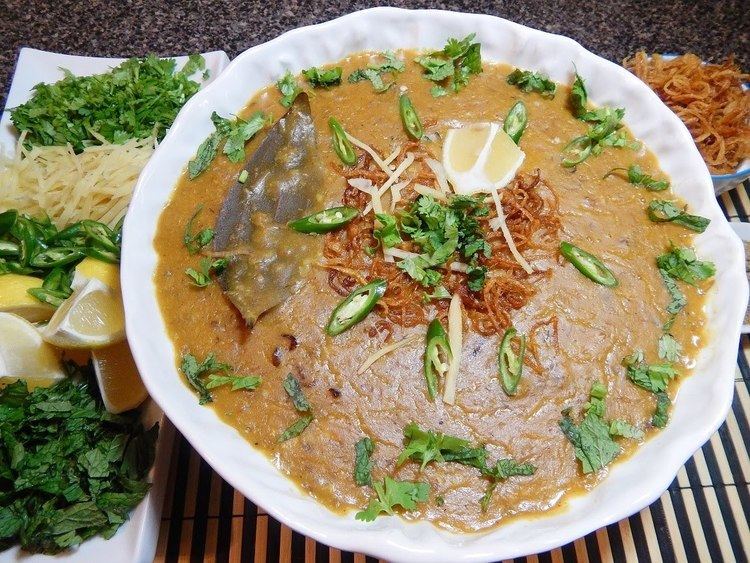 | ||
Region or state Central AsiaMiddle EastIndian subcontinent Similar Nihari, Āsh, Kuku, Biryani, Gosht | ||
Chicken haleem by vahchef vahrehvah com
Haleem or Daleem (Arabic: دلیم, Urdu: دلیم, Turkish: Dalim aşı, Persian: حلیم, Bengali: হালিম, Hindi: दलीम ) is a stew popular in the Middle East, Central Asia, and Indian subcontinent. Although the dish varies from region to region, it always includes wheat or barley, meat and sometimes lentils. Popular variations include keşkek in Turkey, Iran, Azerbaijan and northern Iraq; Hareesa in the Arab world and Armenia; Khichra in Pakistan and India; and Hyderabadi Haleem in Telangana, India.
Contents
- Chicken haleem by vahchef vahrehvah com
- Shahi haleem
- Composition
- Origin
- Cultural history
- Hyderabadi haleem
- Haleem and Khichra
- Preparation
- Nutrition
- Serving
- References
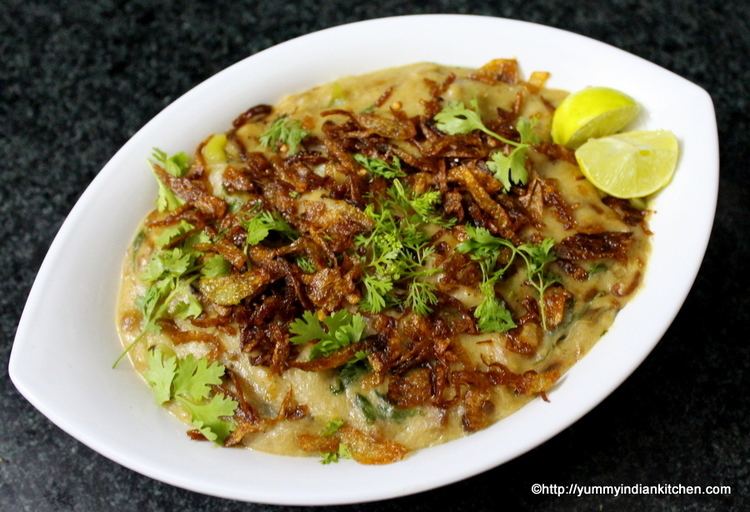
Shahi haleem
Composition
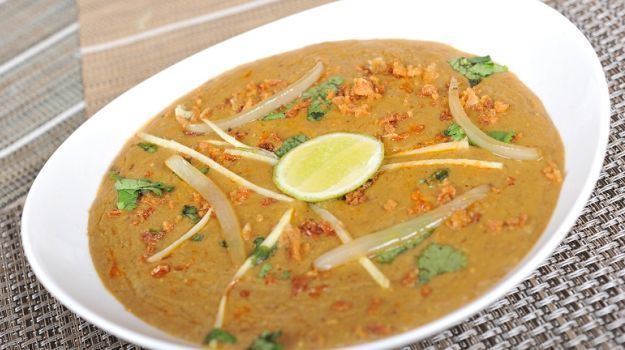
Haleem is made of wheat, barley, meat (usually minced meat of beef or mutton or chicken), lentils and spices, sometimes rice is also used. This dish is slow cooked for seven to eight hours, which results in a paste-like consistency, blending the flavors of spices, meat, barley and wheat.
Origin
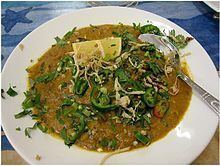
The origin of Haleem lies in the popular Arabian dish known as Harees (also written as Jareesh). According to Shoaib Daniyal, writing in The Sunday Guardian, the first written recipe of Harees dates back to the 10th century, when Arab scribe Abu Muhammad al-Muzaffar ibn Sayyar compiled a cookbook of dishes popular with the "kings and caliphs and lords and leaders" of Baghdad. "The version described in his Kitab Al-Tabikh (Book of Recipes), the world’s oldest surviving Arabic cookbook, is strikingly similar to the one people in the Middle East eat to this day" it reported. Harees was introduced by Arab soldiers of the Hyderabad Nizam's army to the city. Today, Harees is still available in the Arab quarter of Hyderabad, an area called Barkas, where the dish is called Jareesh. Later on, the people of Hyderabad modified it to suit their palate thus creating modern Haleem.
Cultural history
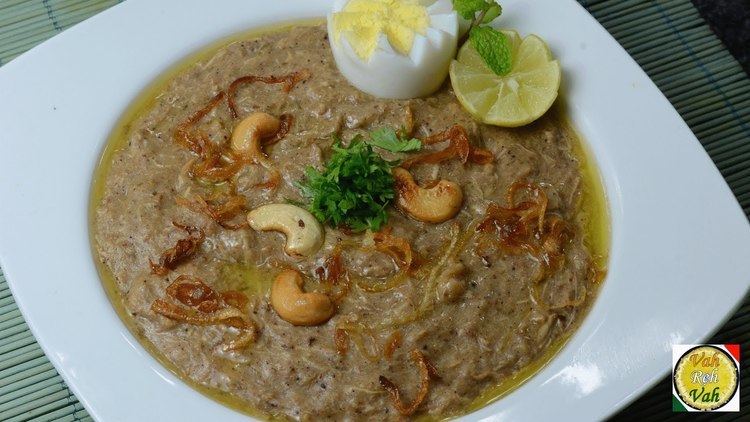
Haleem is sold as a snack food in bazaars throughout the year. It is also a special dish prepared throughout the world during the Ramadan and Muharram months of the Muslim Hijri calendar, particularly among Pakistanis and Indian Muslims.
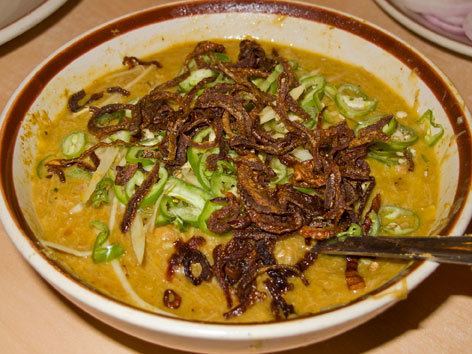
In India, Haleem prepared in Hyderabad during the Ramadan month, is transported all over the world through a special courier service. Haleem is traditionally cooked in large, wood-fired cauldrons.
Haleem is also very popular in Bangladesh, especially during the holy month of Ramadan, when it is a staple dish, although it is cooked differently than in other countries. The meat is not blended into the daal over many hours.
In Pakistan, Haleem is available all year round, as well as in most Pakistani restaurants around the world. Haleem is sold as a snack food and street food in Pakistani bazaars throughout the year.
Hyderabadi haleem
Haleem has become a popular dish in the city of Hyderabad, Telangana, in India. Originating from an Arabic dish called Harees, Haleem was introduced to the region during the Mughal period by foreign migrants.
Both mitthi (sweet) and khari (salted) variants are served, commonly for breakfast; likewise it is a popular dish to serve ending the fast during Ramadan. A derivative in which dried fruits and vegetables are used, is also prepared during Ramadan. It is also served as a traditional starter at Muslim weddings and other celebrations.
Haleem and Khichra
In South Asia, both haleem and khichra are made with same ingredients. In khichra, the chunks of meat remain as cubes, while in haleem the meat cubes are taken out of the pot, bones are removed, meat is crushed and put back in the pot. It is further cooked until the meat completely blends with the lentils, wheat and barley mixture.
Preparation
A traditional Haleem is made by firstly soaking wheat, barley and gram lentil overnight. A spicy meat gravy called Korma is prepared until the meat becomes tender. The wheat, barley and gram are boiled in salt water until they are tender. The cooked wheat, barley and lentils are then mixed with the meat (Beef or Mutton or Chicken) gravy and blended with a heavy hand mixer to obtain a paste-like consistency. The cooking procedure takes about 6 hours to be completed. However, Haleem preparation varies in different regions.
Nutrition
A high-calorie dish, haleem provides protein from the meat and fibre and carbohydrates from the various combinations of grains and pulses.
Serving
Haleem can be served with chopped mint leaves, lemon juice, coriander leaves, fried onions, chopped ginger root or green chilies. In Pakistan, haleem is usually eaten with naan or with any type of bread or rice.
